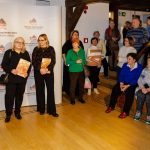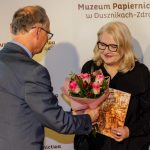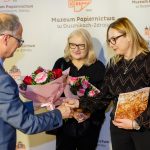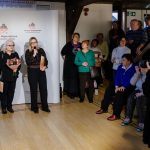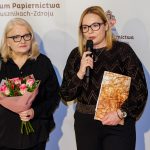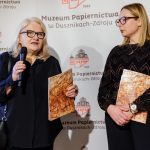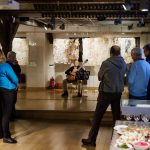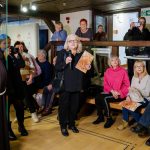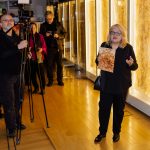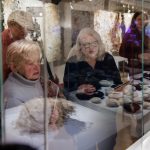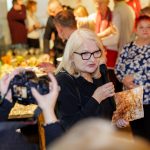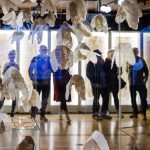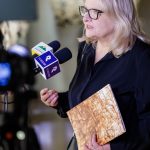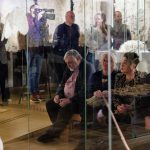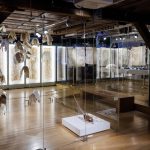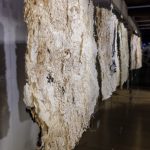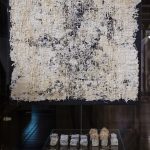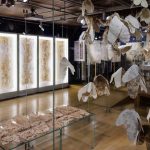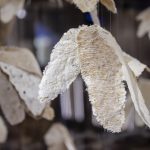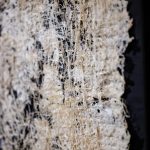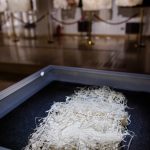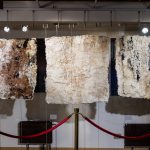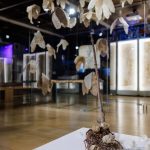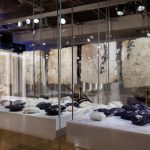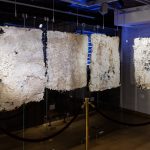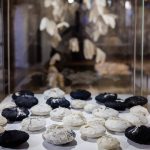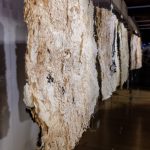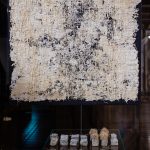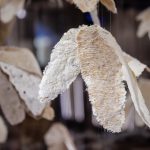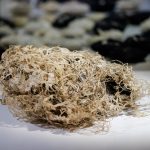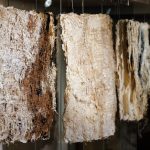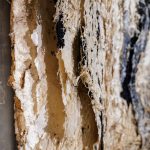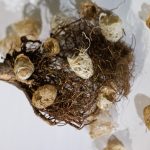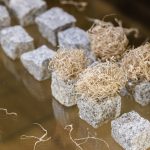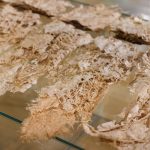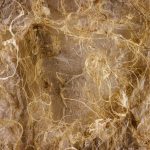Edge – new paper art exhibition
Maria Matyi-Rozpara’s new exhibition is titled “Edge” (polish name: „Krawędź”). Etymology derives its meaning from the polish word “krawać” meaning to cut, but this also means to give shape and search for form. At the same time, the word means the edge, the end of something and the necessary contact with something else. Thus, it is an exceptionally capacious name for the exhibition, suggestive but not imposing, assuming respect for the viewer and inviting them to work individually on reading the presented objects.
It is no coincidence that the exhibition takes place at the Duszniki institution, as the main material Maria Matyja-Rozpara uses is paper. Although it is present in everyday life so often, it performs mainly utilitarian functions in our lives, which causes us to mostly overlook its uniqueness. Also, in the traditional, colloquial perception of artistic techniques, paper was not perceived as a noble material – the “substrate” for pastels or prints did not deserve the same value as noble wood or canvas. Well we usually do not think about the fact that paper can be derived from these materials.
Meanwhile, paper is very often both a carrier and material testimony of ideas – sometimes the most important ones, determining the order of the world. As a substance of organic origin, it contains its structure written in every smallest particle.
In the case of this exhibition, paper is both a visual material and an ideological message although it is not given explicitly, as a record.
The exhibition largely has a character that refers to the world of Christian symbolism. It is a testimony to its experience, but also a dialogue with its traditional forms and an attempt to translate it into a new, inclusive language.
Watching yet another exhibition of works by Maria Matyi-Rozpara, one can ponder what some call the power of images – how are they present in our lives, how do they affect us? To what extent are they necessary for an idea? Or its attempt to understand or experience? Would we stop to think about these issues if not for artists? Exhibitions like this one allow us to stop, to breathe, to give ourselves space for reflection.
Fragment of text from the catalogue written by Ewelina Sobczyk-Podleszańska


